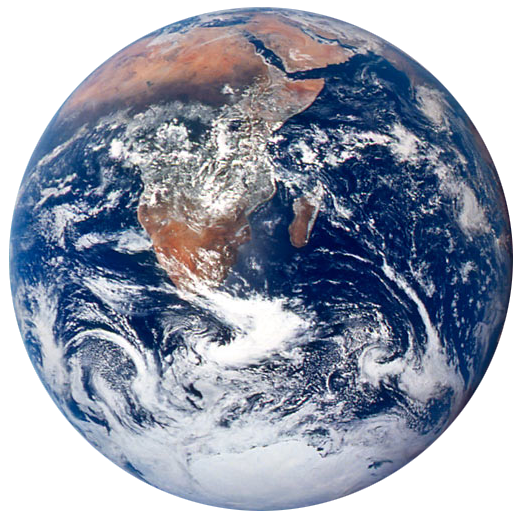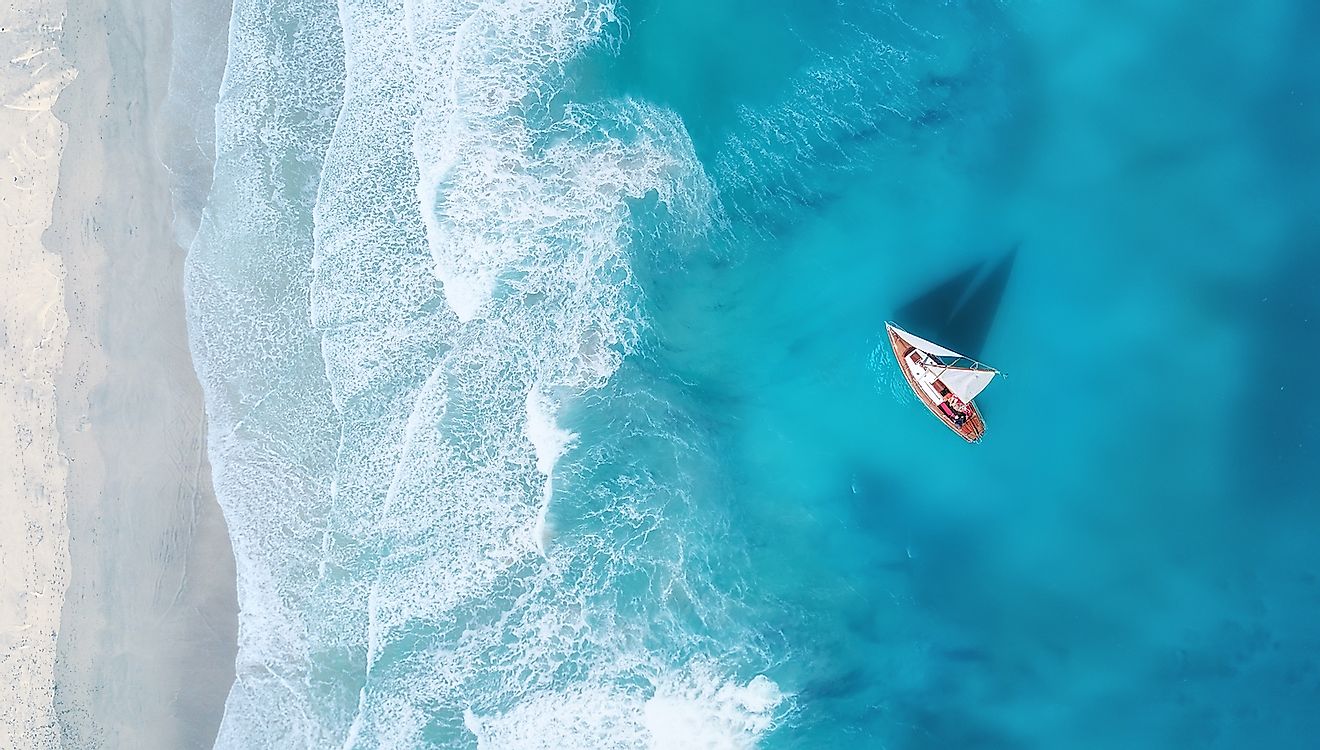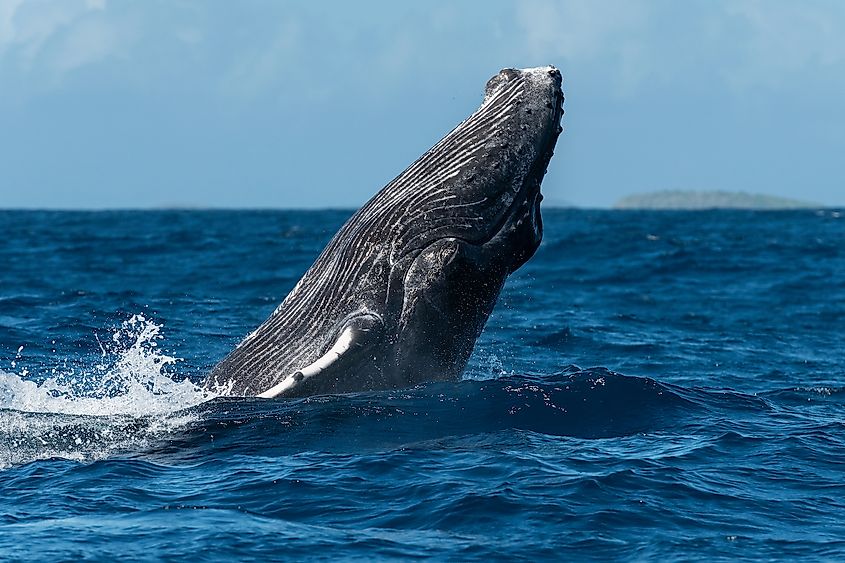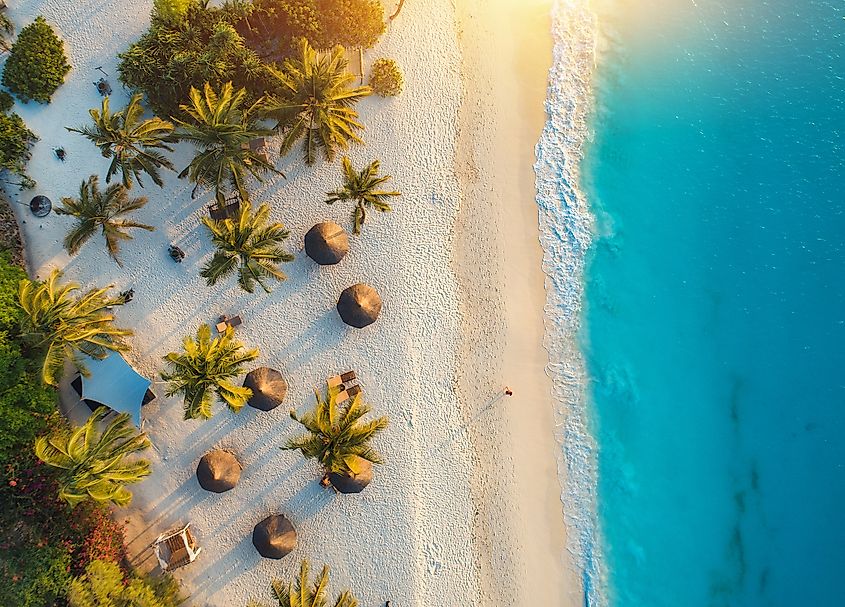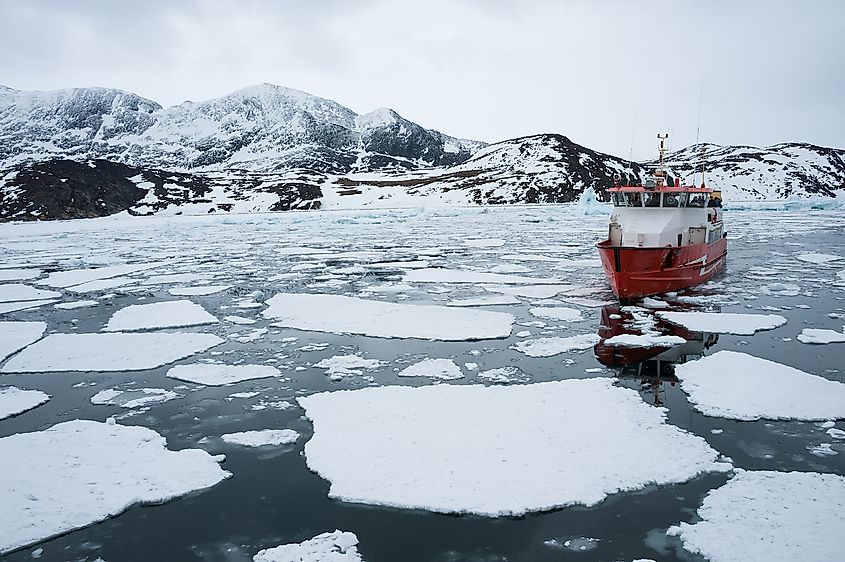- ГДЗ Английский язык 6 класс (часть 2) Афанасьева. UNIT 4. Step 1. Номер №1
- Решение
- Ocean Worlds
- Water in the Solar System and Beyond
- Origins of Oceans
- How did water arrive on Earth?
- Oceans of Earth
- Oceans Lost
- The Oceans Of The World By Size
- 1. The Pacific Ocean
- 2. The Atlantic Ocean
- 3. The Indian Ocean
- 4. The Southern Ocean
- 5. The Arctic Ocean
ГДЗ Английский язык 6 класс (часть 2) Афанасьева. UNIT 4. Step 1. Номер №1
A. Listen, CD( 71 ), and read these names.
The Arctic Ocean,
the Atlantic Ocean,
the Indian Ocean,
the Pacific Ocean. 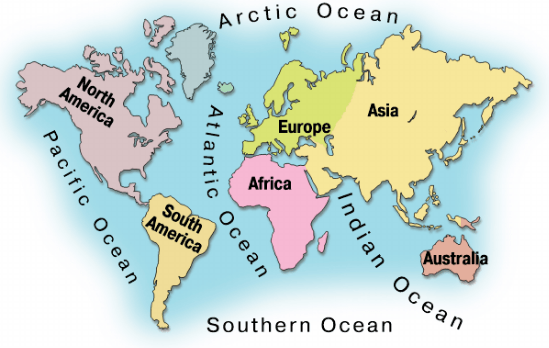
B. Listen to the text, CD( 72 ), and complete the sentences.
1 ) The Atlantic Ocean is . than the Pacific Ocean.
a) larger
b) smaller
2 ) The Arctic Ocean is . than the other three.
a) larger
b) smaller
3 ) If you are going from . to . you travel across the Pacific Ocean.
а ) Europe . America
b) Asia . America
4 ) The Arctic Ocean is in the . and the Indian Ocean is in the . .
a) north . south
b) south . north
5 ) Now we . say that we know all about the oceans.
a) can
b) cannot
6 ) The newest ocean on the map is. .
a) The Arctic Ocean
b) The Southern Ocean
Решение
Перевод задания
A. Прослушай Аудио ( 71 ) и прочитай эти названия.
Северный Ледовитый океан,
Атлантический океан,
Индийский океан,
Тихий океан.
B. Прослушай текст, Аудио ( 72 ) и дополни предложения.
1 ) Атлантический океан . чем Тихий океан.
а) больше
б) меньше
2 ) Северный Ледовитый океан . чем остальные три.
а) больше
б) меньше
3 ) Если вы едете из . в . вы путешествуете через Тихий океан.
а) Европы . Америку
б) Азии . Америку
4 ) Северный Ледовитый океан на . и Индийский океан на .
а) севере . юге
б) юге. севере
5 ) Теперь мы . сказать, что знаем все об океанах.
а) можем
б) не может
6 ) Самый новый океан на карте .
а) Северный Ледовитый океан
б) Южный океан
AUDIO
As you know there are four oceans on our planet. The largest and the deepest is the Pacific ocean. The second largest ocean is the Atlantic ocean. This is only half as large as the Pacific. The Indian ocean is smaller but deeper than the Atlantic ocean. The Arctic ocean is the smallest and it is not very deep.
The ocean between Europe and America is the Atlantic, the Pacific is to the east of Asia. The Arctic ocean is in the north and the Indian is in the south, near India.
The four oceans have 97 % of all water on the planet. Oceans are home to millions of living things: plants, fish, water birds and animals.
People started travelling across the ocean very long ago. Once it was very dangerous because they didn’t have good strong ships. Now we have modern ships and underwater bathyscaphes but we can’t say that we know everything about the oceans – there are still a lot of things that we would like to find out.
Oceanographers are scientists who help us to know more about four powerful oceans and life in them.
Перевод AUDIO
Как вы знаете, на нашей планете четыре океана. Самым большим и глубоким является Тихий океан. Второй по величине океан − Атлантический океан. Он вдвое меньше, чем Тихий океан. Индийский океан меньше, но глубже Атлантического. Северный Ледовитый океан самый маленький и не очень глубокий.
Океан между Европой и Америкой − это Атлантика, Тихий − к востоку от Азии. Северный Ледовитый океан находится на севере, а Индийский − на юге, около Индии.
В четырех океанах 97 % всей воды на планете. Океаны являются домом для миллионов живых существ: растений, рыб, водоплавающих птиц и животных.
Люди начали путешествовать через океан очень давно. Когда−то это было очень опасно, потому что у них не было хороших мощных кораблей. Сейчас у нас есть современные корабли и подводные батискафы, но мы не можем сказать, что знаем все об океанах − есть еще много вещей, которые мы хотели бы узнать.
Океанографы − это ученые, которые помогают нам узнать больше о четырех могущественных океанах и жизни в них.
ОТВЕТ
A. не требуется
B.
1 – b, 2 – b, 3 – b, 4 – a, 5 – b, 6 – a.
1 ) The Atlantic Ocean is smaller than the Pacific Ocean.
2 ) The Arctic Ocean is smaller than the other three.
3 ) If you are going from Asia to America , you travel across the Pacific Ocean.
4 ) The Arctic Ocean is in the north and the Indian Ocean is in the south .
5 ) Now we cannot say that we know all about the oceans.
6 ) The newest ocean on the map is the Arctic Ocean .
Перевод ответа
1 ) Атлантический океан меньше Тихого океана.
2 ) Северный Ледовитый океан меньше трех других.
3 ) Если вы едете из Азии в Америку, вы путешествуете через Тихий океан.
4 ) Северный Ледовитый океан находится на севере, а Индийский океан − на юге.
5 ) Сейчас мы не можем сказать, что знаем все об океанах.
6 ) Самый новый океан на карте − Северный Ледовитый океан.
Источник
Ocean Worlds
Water in the Solar System and Beyond
The story of oceans is the story of life. Oceans define our home planet, covering the majority of Earth’s surface and driving the water cycle that dominates our land and atmosphere. But more profound still, the story of our oceans envelops our home in a far larger context that reaches deep into the universe and places us in a rich family of ocean worlds that span our solar system and beyond.
Origins of Oceans
What is the ultimate origin of water?
A water molecule is made up of one oxygen and two hydrogen atoms.
Hydrogen was created in the Big Bang and oxygen in the cores of stars more massive than the Sun. Enormous amounts of water, in gaseous form, exist in the vast stellar nurseries of our galaxy.
The Hubble Space Telescope peered into the Helix Nebula and found water molecules. Hydrogen and oxygen, formed by different processes, combine to make water molecules in the ejected atmosphere of this dying star. The origins of our oceans are in the stars.
Water molecules exist in the Orion Nebula and are still forming today. The nebula is composed mostly of hydrogen gas; other molecules are comparatively rare. Even so, the nebula is so vast that it creates enough water every day to fill Earth’s oceans 60 times over. Water, along with every other molecule created in these stellar nurseries, becomes raw material for the formation of new planetary systems.
Water molecules are abundant in planetary systems forming around other stars.
Water molecules have been found around the 20-million-year-old star Beta Pictoris, where a huge disk of dust and gas hints at collisions between comets, asteroids, and young planets (artist’s conception).
How did water arrive on Earth?
Asteroids and comets are debris left over from the formation of our solar system and are rich in water.
These small bodies are time capsules that contain tantalizing clues about what our solar system was like 4.5 billion years ago.
Most asteroids orbit the Sun between the planets Mars and Jupiter, but many swing nearer to Earth and even cross our orbit. Comets are found in the outer reaches of our solar system, either in the Kuiper Belt just beyond the orbit of Pluto, or in the vast, mysterious Oort Cloud that may extend halfway to the nearest star.
Over billions of years, countless comets and asteroids have collided with Earth, enriching our planet with water. Chemical markers in the water of our oceans suggest that most of the water came from asteroids. Recent observations hint that ice, and possibly even liquid water, exists in the interiors of asteroids and comets.
Oceans of Earth
How are our oceans changing?
Water on Earth is very abundant— about 71 percent of Earth’s surface is covered by water.
There are more than 326 million trillion gallons of water on Earth. Earth’s oceans contain about 96.5 percent of all the planet’s water.
Less than 3 percent of all water on Earth is freshwater (usable for drinking).
More than two-thirds of Earth’s freshwater is locked up in ice caps and glaciers.
Monitoring Our Oceans
Changing sea levels will affect everyone on our planet, and NASA has been monitoring these trends for decades.
As global temperatures increase, the ocean responds by expanding.
Factoid: Ocean levels are currently rising at the rate of 0.13 inches per year.
The Greenland ice sheet is melting at the rate of 287 billion tons a year, and the Antarctic ice sheet is losing 134 billion tons a year. Both will be factors in sea level rise.
Earth’s oceans are teeming with life, which creates changes in ocean color that are visible from space. Tiny plants, phytoplankton, bloom for hundreds of miles, coloring the oceans and giving us clues about complex marine ecosystems.
Driven by wind, temperature, salinity, and other forces, currents on the ocean surface cover our planet. Some span hundreds to thousands of miles across vast ocean basins in well-defined flows. Others are confined to particular regions and form slow-moving, circular pools. This visualization is based on data collected during field observations and by NASA satellites.
Oceans Lost
Do planets lose their oceans over time?
Billions of years ago, Venus may have been our solar system’s first ocean world. Venus lacks a strong global magnetic field, which on Earth, helps to protect our atmosphere. A runaway greenhouse effect raised temperatures enough to boil off the water, which escaped into space due to the solar wind.
Mars was once much more Earth-like, with a thick atmosphere, abundant water, and global oceans (as in this artist’s conception).
Billions of years ago, Mars lost its protective global magnetic field, leaving it vulnerable to the effects of our Sun: solar wind and space weather.
The MAVEN mission has measured Mars continuing to lose its atmosphere to the Sun at the rate of nearly 400 kilograms per hour.
Scientists estimate that Mars has lost approximately 87 percent of the water it had billions of years ago.
Most of the remaining water on Mars is frozen in the ice caps or trapped beneath the soil, but a small amount of muddy, brackish water can be seen moving down the side of Martian hills in the local summer.
Источник
The Oceans Of The World By Size
The world ocean covers more than two-thirds of the surface of the Earth. Image credit: biletskiyevgeniy.com/Shutterstock.com
- Making up roughly 46.6 percent of the global ocean, experts consider the Pacific to be the world’s largest ocean.
- Similar to the Pacific, the Atlantic Ocean stretches from the north of the globe to the south, but is significantly narrower in comparison.
- There are some debates regarding the actual size of the Southern Ocean as governments across the world do not unanimously agree on where the other oceans end and the Southern begins.
- Located in the north polar region, the Arctic is the smallest of all five oceans, making up only 4.3 percent of the global ocean.
Experts estimate that 71 percent of the Earth’s surface is completely covered by water with approximately 96.5 percent of this water being ocean. There is technically one global ocean, uninterrupted by land, but we generally refer to it by its five distinct basins: the Pacific, the Atlantic, the Indian, the Southern, and the Arctic. They are aptly named for the region of the world they are located.
The boundaries between these oceans have changed throughout history for various geographical and political reasons, and for all we know, they might change again. In the meantime, the following article compares the five world oceans by size as recognized by maps today.
1. The Pacific Ocean
Breaching humpback whale, Pacific Ocean, Vava’u, Tonga. Image credit: Wildestanimal.Shutterstock.com
At 168,723,000 square kilometers, the Pacific is the world’s largest ocean. It makes up roughly 46.6 percent of the global ocean, which is just less than half. It extends from the Arctic in the north to the Antarctic in the south, and is largely located between Asia and the Americas, covering 135,663 kilometers of coastline. Some of the more notable countries it borders is Russia, China, Canada, the United States, Mexico, Peru, and Chile. It is home to approximately 25,000 islands, many of which belong to Asia, but it also borders the island continent of Australia.
The Pacific’s average depth is 3,970 meters, the most of any ocean, but it is also the place where the Mariana Trench is located. Measuring 11,034 meters, it is the deepest place on Earth. In fact, Mount Everest would be completely submerged if placed at the very bottom. Given this fact, it should come as no surprise to learn that the Pacific boasts 50.1 percent of the total global ocean volume. Because of its enormous size, the Pacific is home to a colorful collection of sea creatures, from killer whales to dugongs, and giant squids to tiny sea slugs.
This vast ocean has been the backdrop to some incredible moments throughout history, but recently, it is most known for being a principal theater of war during World War II, witnessing such iconic events like the Battles of Midway and Iwo Jima.
2. The Atlantic Ocean
The Atlantic measures approximately 85,133,000 square kilometers. Even though it is the second largest ocean in the world, the Pacific is roughly twice as big. Despite this difference, it runs along 111,866 kilometers of coastline. On the west, it borders the Americas, including countries like Brazil and Argentina. On the east, it borders Europe and numerous African countries. Similar to the Pacific, it stretches from the north of the globe to the south, but is significantly narrower in comparison. It is recognizable on a world map by its distinct S-shape.
It has an average depth of 3,646 meters; however the Milwaukee Deep—its deepest point—measures 8,380 meters. It was only recently when Victor Vescovo, a former naval officer, made the first descent to the cold depths of this particular section of the Puerto Rico Trench.
The ocean’s name derives from Greek mythology, specifically Atlas, the Titan who was responsible for holding the weight of the heavens on his shoulders. This is perhaps an appropriate moniker as the Atlantic witnessed many horrific events throughout history, such as the sinking of the Titanic in 1912 and the attack on the RMS Lusitania in 1915.
3. The Indian Ocean
At 70,560,000 square kilometers, the Indian Ocean comes in at third. It makes up approximately 19.5 percent of the global ocean and has 66,526 kilometers of coastline. Unlike the previous two oceans, it does not run north to south, but rather is landlocked from the north, contained in a pocket made up of East Africa, parts of Asia, and western Australia. It is home to many islands, including Madagascar, the fourth largest island in the world.
Despite its smaller size, the Indian Ocean has an average depth roughly 100 meters deeper than the Atlantic. It contains the fewest trenches of any of the other oceans, but it is where the world’s second-longest trench—the Java Trench—is located. It is there where the Indian reaches its deepest point of 7,450 meters.
In earlier times, it was known as the Eastern Ocean before it was dubbed the Indian around the beginning of the 1500s. Since then, some local governments, including Pakistan, contested its name because of the implication that India was the most important country in the southern half of the continent. Regardless of any efforts to change its title, it remains the Indian Ocean.
4. The Southern Ocean
The Southern Ocean measures approximately 21,960,000 square kilometers. Making up 6.1 percent of the global ocean, it is significantly smaller than the three oceans above. In fact, the Pacific is roughly seven times bigger. It should be noted, however, that there is some debate as to where the other oceans end and the Southern begins. The United States recognizes the latter as the body of water extending up to the 60 th parallel south, a circle of latitude well below the equator. Regardless, it is aptly named for its position at the bottom of the globe where it completely surrounds Antarctica.
Even though it is drastically smaller, it has an average depth of 3,270 meters, which is only 700 meters less deep than the Pacific. Despite the barren landscape, it is home to a diverse collection of wildlife, including whales, seals, and penguins. Unfortunately, many of these animals are currently at risk because of pollution and the ever-increasing threat of climate change.
Throughout history, only the other four oceans were recognized. The Southern was first proposed to the International Hydrographic Organization in 2000. It has yet to be accepted by all members, so its inclusion is not yet official, but many countries, including the United States, acknowledge its legitimacy.
5. The Arctic Ocean
Passenger ship sailing through the icy waters of Qasigiannguit, Greenland. Image credit: Yongyut Kumsri/Shutterstock.com
The Arctic is the smallest of all five oceans. Stretching 15,558,000 square kilometers, it makes up only 4.3 percent of the global ocean. It does, however, have 27,421 more kilometers of coastline than the Southern. Located in the north polar region, it borders six countries: the United States, Canada, Greenland, Iceland, Norway, and Russia. It is home to several notable islands, including the Queen Elizabeth Islands, the Russian Arctic Islands, and the aforementioned island country of Iceland which straddles the Arctic and Atlantic.
The Arctic Ocean is even less deep than all the others, its average depth coming in at just 1,205 meters. It is generally recognized as the coldest of the five; however, it is warming two to three times faster than the rest of the world due to climate change.
Its name comes from the Greek word Arktos which means “bear.” This inspiration has less to do with the native polar bears and more to do with the constellations Ursa Minor and Ursa Major—Little Bear and Great Bear. Several oceanographers prefer to refer to it as the Arctic Sea, but the International Hydrographic Organization does recognize it as an official ocean.
Источник
